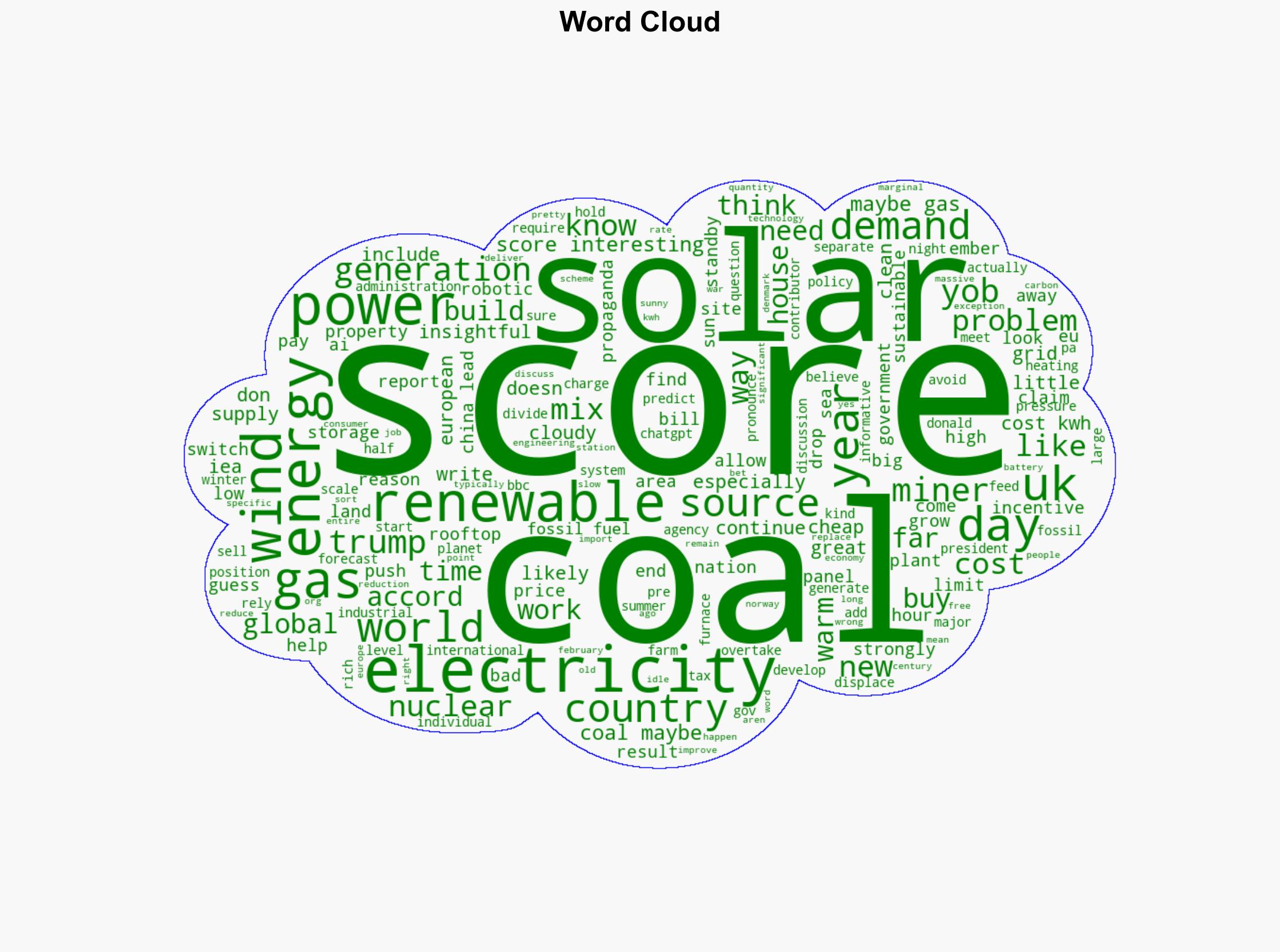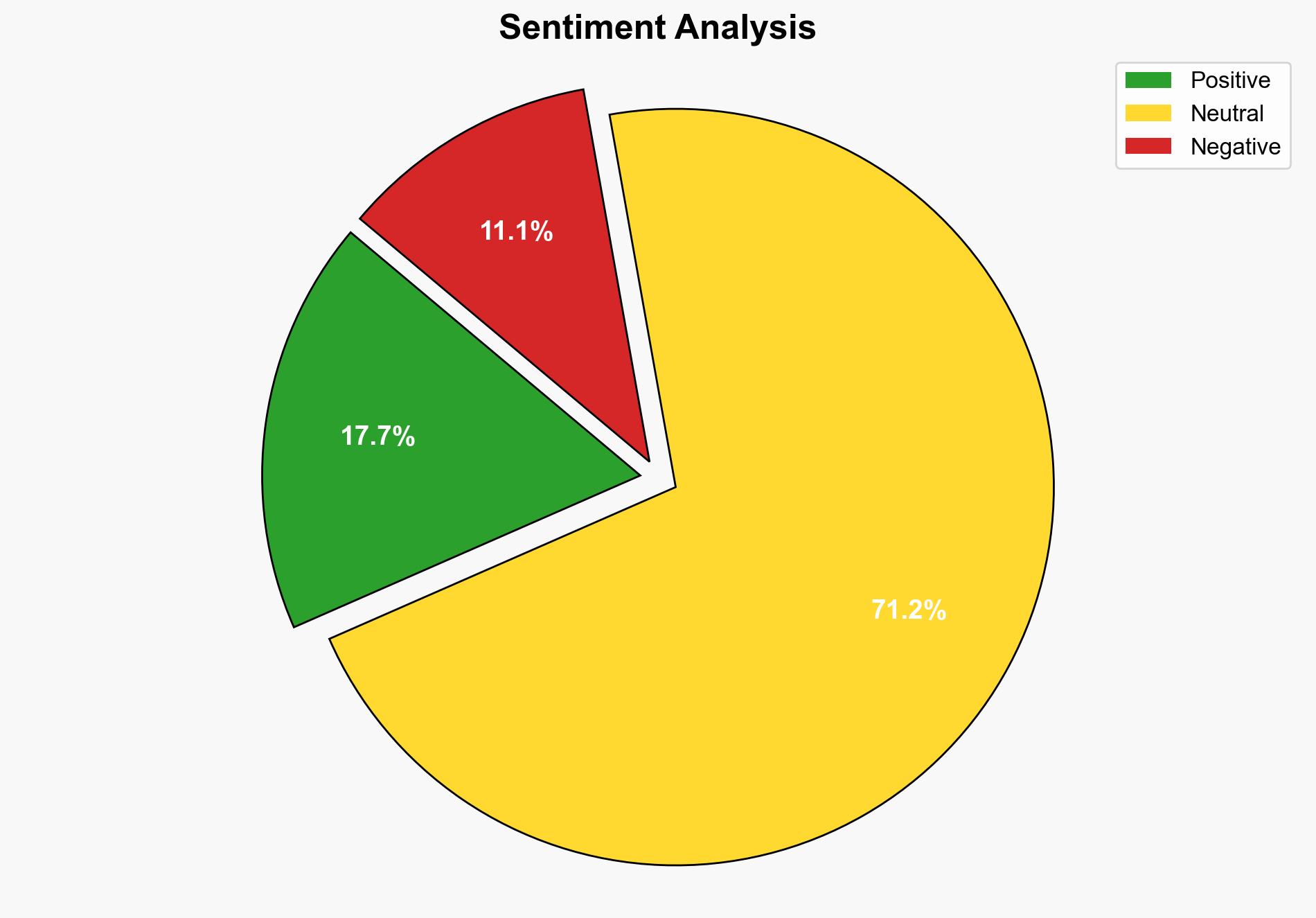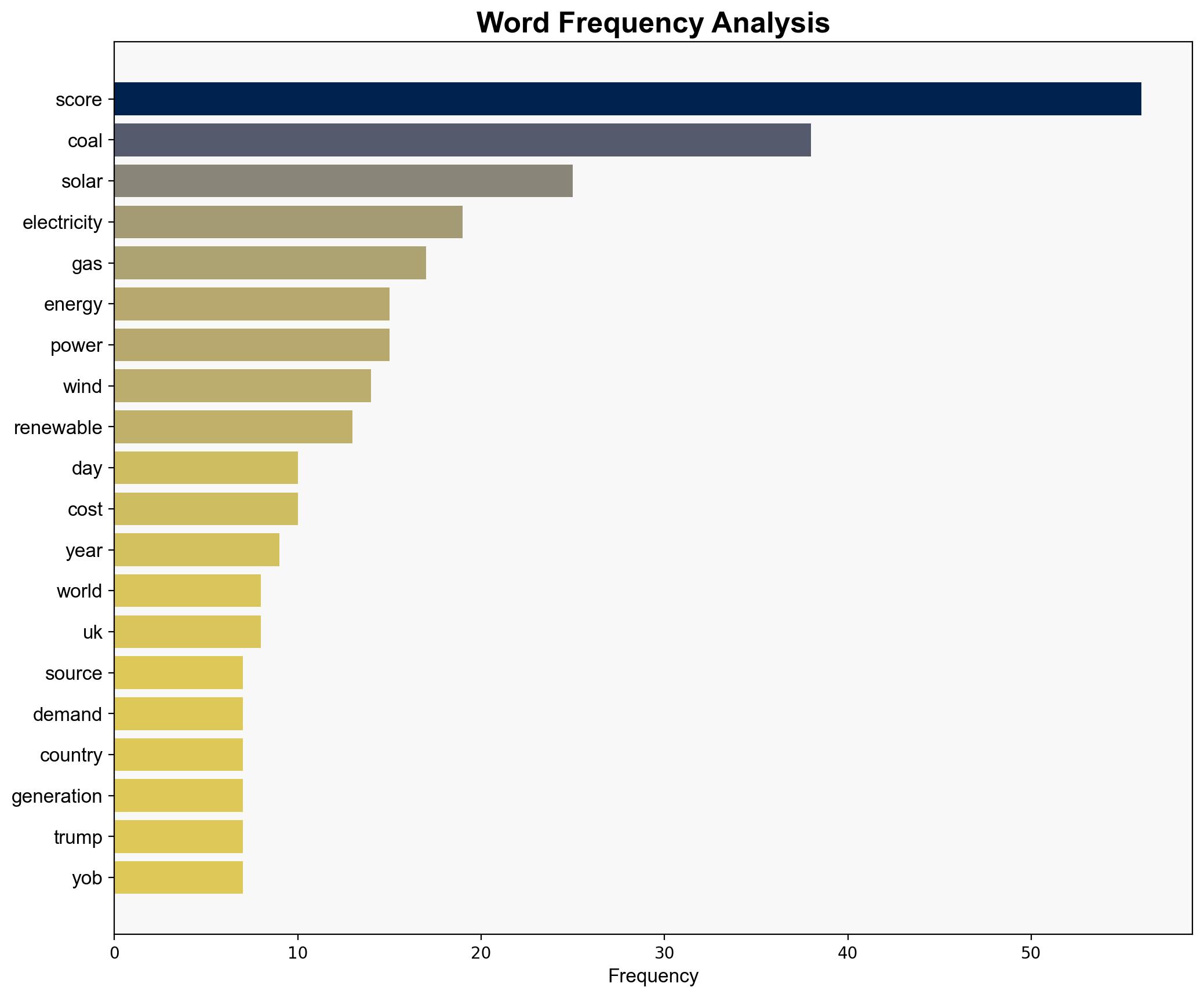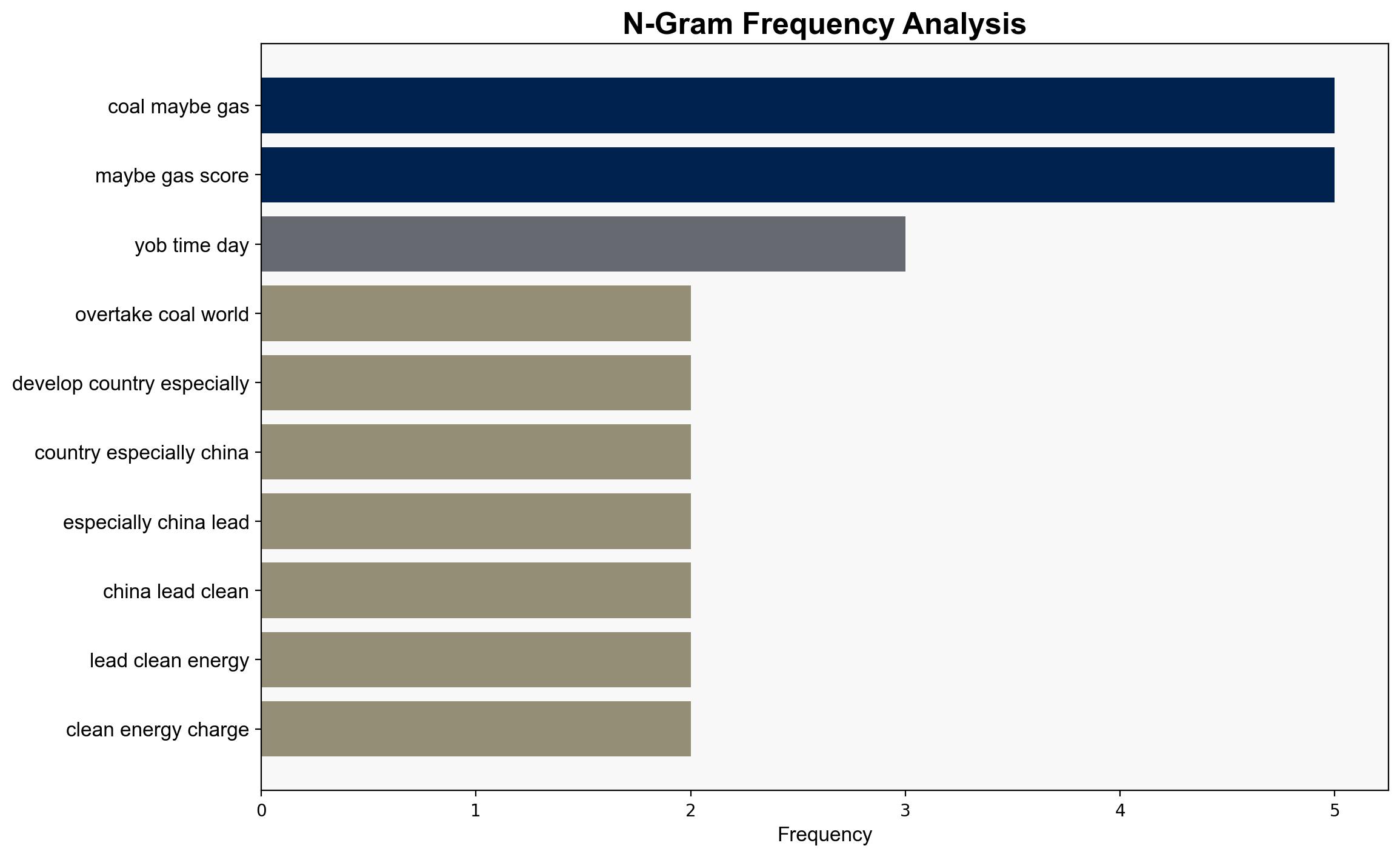Renewables Overtake Coal As World’s Biggest Source of Electricity – Slashdot.org
Published on: 2025-10-08
Intelligence Report: Renewables Overtake Coal As World’s Biggest Source of Electricity – Slashdot.org
1. BLUF (Bottom Line Up Front)
Renewable energy sources have surpassed coal as the leading source of electricity globally, driven by significant growth in solar and wind energy. This shift is primarily led by developing countries, notably China, while developed nations continue to rely heavily on fossil fuels. The most supported hypothesis is that the transition to renewables will continue to accelerate, albeit unevenly across regions. Confidence Level: Moderate. Recommended action includes promoting policies that support renewable energy infrastructure and addressing regional disparities in energy transition.
2. Competing Hypotheses
1. **Hypothesis A**: The global shift to renewable energy will continue to accelerate, driven by technological advancements and policy support, leading to a significant reduction in coal dependency.
– **Supporting Evidence**: Strong growth in solar and wind energy, policy forecasts by the International Energy Agency (IEA), and China’s leadership in clean energy.
2. **Hypothesis B**: The transition to renewable energy will face significant challenges, resulting in a slower and more uneven shift, with developed nations lagging behind due to continued reliance on fossil fuels.
– **Supporting Evidence**: Continued fossil fuel dependency in developed nations, potential policy reversals, and infrastructure challenges.
Using the Analysis of Competing Hypotheses (ACH) 2.0, Hypothesis A is better supported due to the consistent global trends in renewable energy adoption and strong policy forecasts, despite regional disparities.
3. Key Assumptions and Red Flags
– **Assumptions**: Technological advancements in renewable energy will continue; policy support will remain strong; economic incentives will favor renewables.
– **Red Flags**: Potential policy reversals, especially in developed nations; economic disruptions affecting energy investments; geopolitical tensions impacting energy supply chains.
– **Blind Spots**: The impact of energy storage solutions on renewable adoption; the role of emerging markets in shaping future energy trends.
4. Implications and Strategic Risks
– **Economic**: The shift to renewables could disrupt traditional energy markets, impacting economies reliant on fossil fuels.
– **Geopolitical**: Regional disparities in energy transition may lead to geopolitical tensions, particularly between developed and developing nations.
– **Cyber**: Increased reliance on renewable energy infrastructure could expose new cybersecurity vulnerabilities.
– **Psychological**: Public perception and acceptance of renewables may influence policy and investment decisions.
5. Recommendations and Outlook
- Promote international collaboration to support renewable energy infrastructure development, particularly in regions lagging behind.
- Invest in energy storage technologies to address variability in renewable energy supply.
- Monitor geopolitical developments that could impact energy supply chains and policy decisions.
- Scenario Projections:
– **Best Case**: Rapid global adoption of renewables, leading to significant reductions in carbon emissions and energy costs.
– **Worst Case**: Policy reversals and economic disruptions slow the transition, prolonging fossil fuel dependency.
– **Most Likely**: Continued uneven transition with gradual improvements in renewable energy adoption and infrastructure.
6. Key Individuals and Entities
– International Energy Agency (IEA)
– Global energy think tank Ember
– Policy influencers and decision-makers in China and the EU
7. Thematic Tags
energy transition, renewable energy, global energy policy, geopolitical tensions, economic impact





